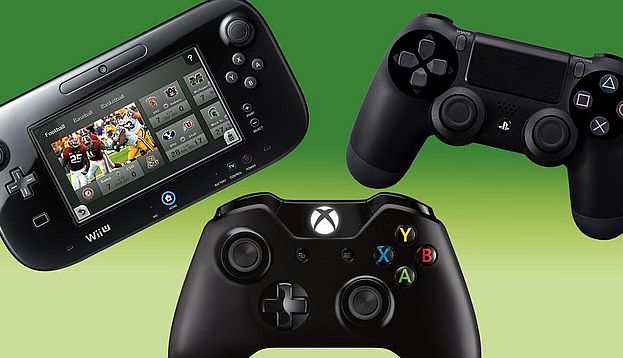The massive marketing battle of Black Friday marks the beginning of the holiday marketing combat between the three console manufacturers, and based on reports from the front lines we have a winner: Microsoft’s Xbox One. Yet the battle is just beginning, and strategically Microsoft still has plenty of ground to cover in order to match Sony’s market share. Meanwhile, Nintendo has unleashed perhaps its biggest weapon yet to advance the Wii U in Super Smash Bros. For Wii U, but how has it performed so far The details of this opening battle tell us something of the console market and how it’s changing.
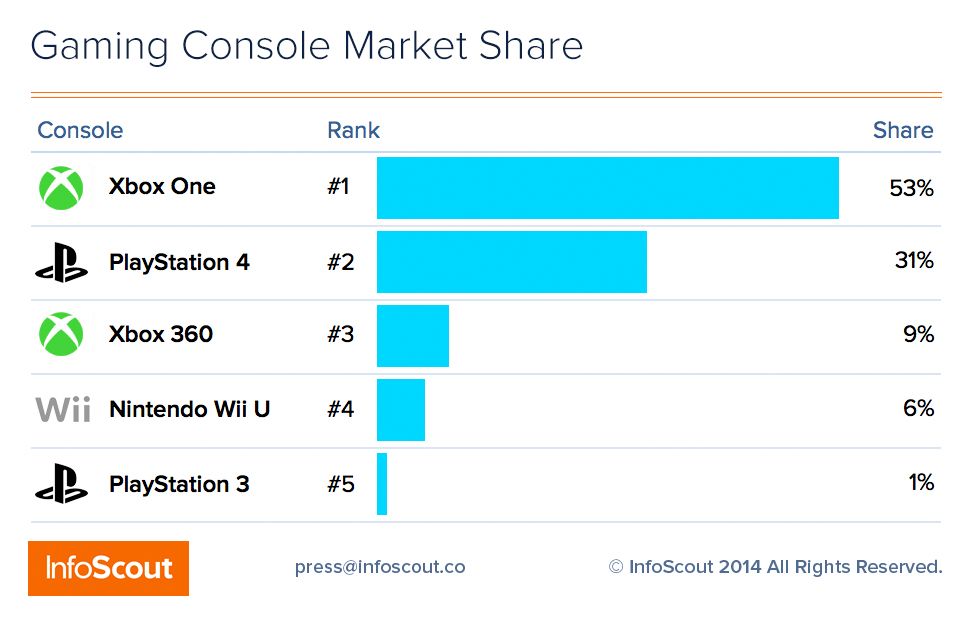
First of all, let’s look at where our data is coming from. InfoScout is a research firm using smartphone apps that reward users for uploading pictures of their store receipts. This gives the company a clear picture (pun, as always, intended) of what people are buying — and in the case of Black Friday, InfoScout collected more than 182,000 receipts showing actual purchases. That’s a respectably-sized data set. The data includes purchases at all major retailers carrying electronics including Walmart, Target, Best Buy, GameStop, RadioShack, and others (more specifics on InfoScout’s data collection can be found here).
The Xbox One emerged as the clear winner, notching up 53 percent of the console sales. The PlayStation 4 came in second with 31 percent, trailed by the Xbox 360 (9 percent), the Wii U (6 percent), and the PlayStation 3 (1 percent). Interestingly, the data showed that 90 percent of all console purchases on Black Friday were of bundles, with some 75 percent of the panelists saying that the included game was a major influencer on their purchase.
Clearly, we can see that consumers have a strong price sensitivity, and that Microsoft’s price cut has given the Xbox One a strong boost. Last year, the PlayStation 4 lost out to the Xbox One as well (InfoScout reported {link no longer active} 31 percent Xbox One share and 15 percent PS4 share), but the cause last year was purely one of availability — Sony just could not make enough PS4 consoles to meet the tremendous demand. This year, the Xbox brand combined took a 62 percent share of the market.
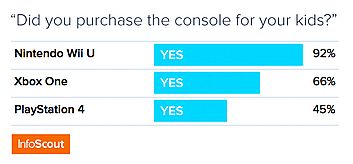
Buyers were mainly purchasing for their kids, but the breakdown was quite different for each console. While 92 percent of Wii U buyers said they were buying the console for their kids, only 66 percent of Xbox One buyers said that — and only 45 percent of PS4 buyers were buying that console for their kids. Most PS4 buyers were picking up the console for themselves. It would seem from this data that Nintendo still has its very strong association with kids, or at least it does so in the minds of the parents buying consoles.
The success of consoles was not a limited thing, either. The Xbox One was the second most popular item being purchased across retailers, and the PlayStation 4 was the #3 choice. It was another game-playing device entirely, though, that claimed four out of the top ten spots among the top-selling items, including the #1 slot. That was, of course, Apple’s iPad. Looked at in that light, the majority of the top ten items being purchased were game-playing devices… and the iPad is clearly the winning console.
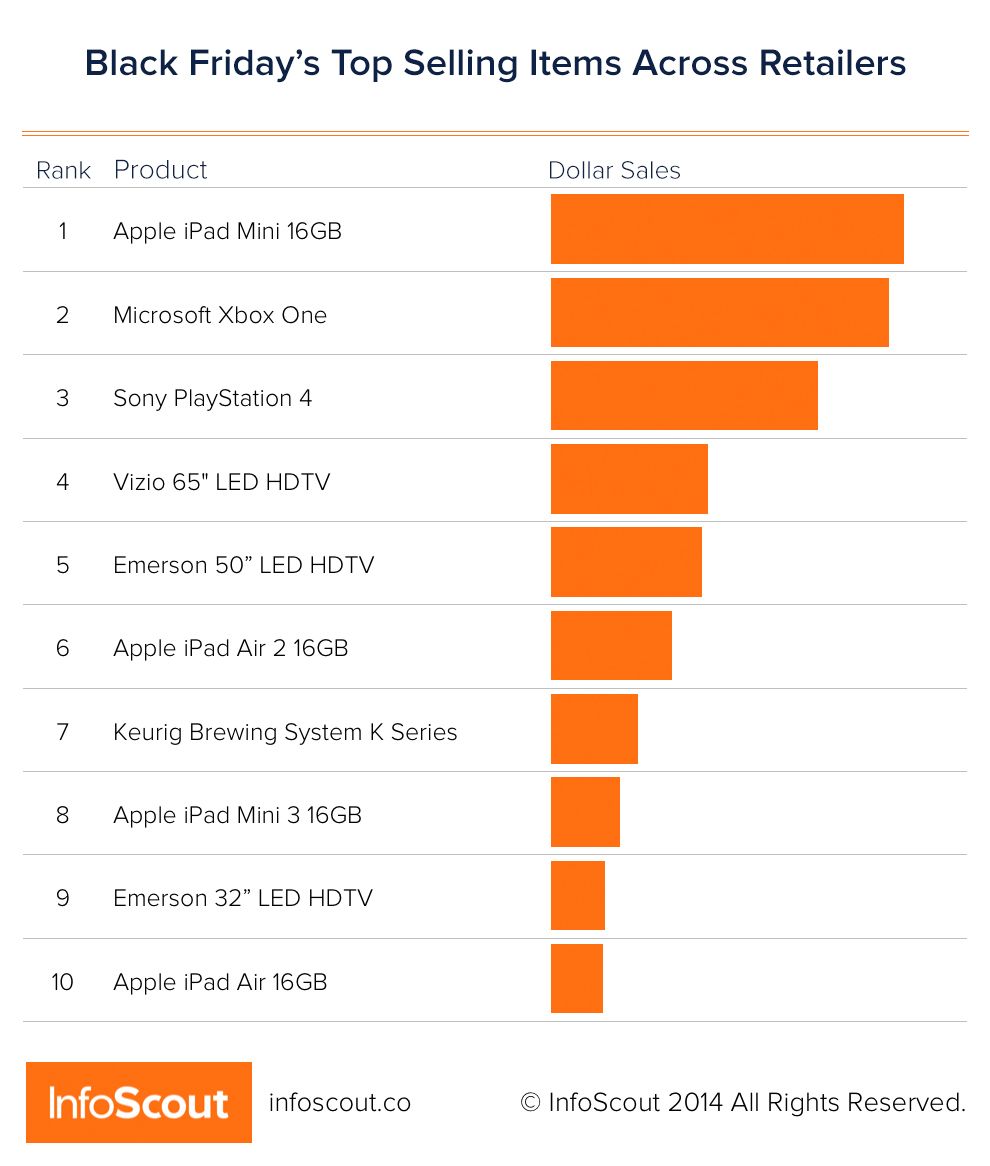
While we’re looking at the console hardware, it’s also instructive to take a look at the top-selling games over Black Friday. InfoScout also collected that information, and found that the top-selling game was Madden NFL 15, followed by Call of Duty: Advanced Warfare and Skylanders: Trap Team. What’s perhaps more interesting is what’s not on the list: Super Smash Bros.
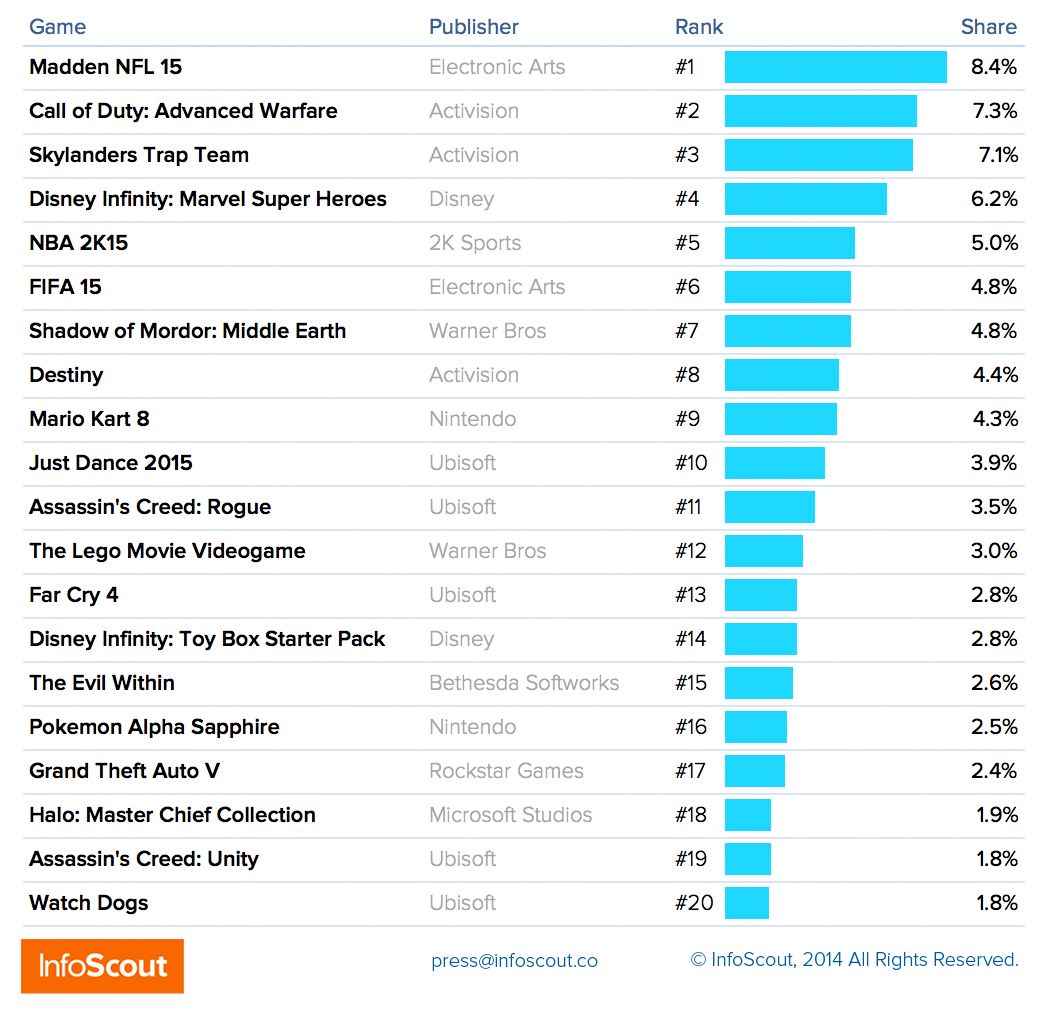
Nintendo has been looking forward to Super Smash Bros. as a key part of the effort to boost Wii U sales, which it has undoubtedly done. Yet the question is also just how long-lasting that boost will be, and how high the Wii U’s sales can go. The effect of Mario Kart 8 on Wii U sales was powerful, but it seemed to diminish after a month or two. Will the same thing happen with Super Smash Bros. It’s too early to know, but not seeing it on the list of the top 20 games (and seeing Nintendo with a 6 percent share of console sales for Black Friday) is not a good early sign. Nintendo will have to ramp up its marketing efforts for the Wii U, and consider the magic weapon that Microsoft is using to good effect: pricing.
Microsoft has gotten down to basics here, and shown that when consoles are pretty much equal, consumers are definitely going to go with price. The Xbox One and the PlayStation 4 are more alike than any previous pair of rival consoles has ever been. What’s left to distinguish them, and help consumers make buying decisions, are price, exclusive games, and marketing. The evidence seems to be that while both consoles have some good exclusive games, and creative marketing, price is winning the battle here.

It’s more than price, though — it’s value. While bundling games may distress retailers like GameStop, it’s an easy way to boost the value of a console while not increasing the cost of good by much. Microsoft has combined that with a solid price cut, giving them a clear advantage in the eyes of low-information shoppers. “Hey, honey, which console should we get for the kids ” “Well, this Xbox One is only $329, and the PS4 is $399… let’s get the Xbox One.”
Sony’s going to have to decide how to respond to Microsoft’s surge. Will it be an increased marketing effort Is there a price cut in the PS4’s future At this point, Sony is likely to hold off on a price cut. After all, the company is still leading comfortably in units installed, and there are some powerful exclusives headed to the platform in 2015. No doubt the pricing will be re-evaluated on a regular basis… along with how well Microsoft is doing with the Xbox One. By E3 next year, we could well see some new initiatives by Sony.
For now, we’ll have to wait until we see earnings reports for the quarter, early next year, to get a better idea of where market shares have settled after the holiday shopping season is over. One thing is clear, though — game consoles are selling very well indeed, and that’s going to benefit all areas of the game industry.
